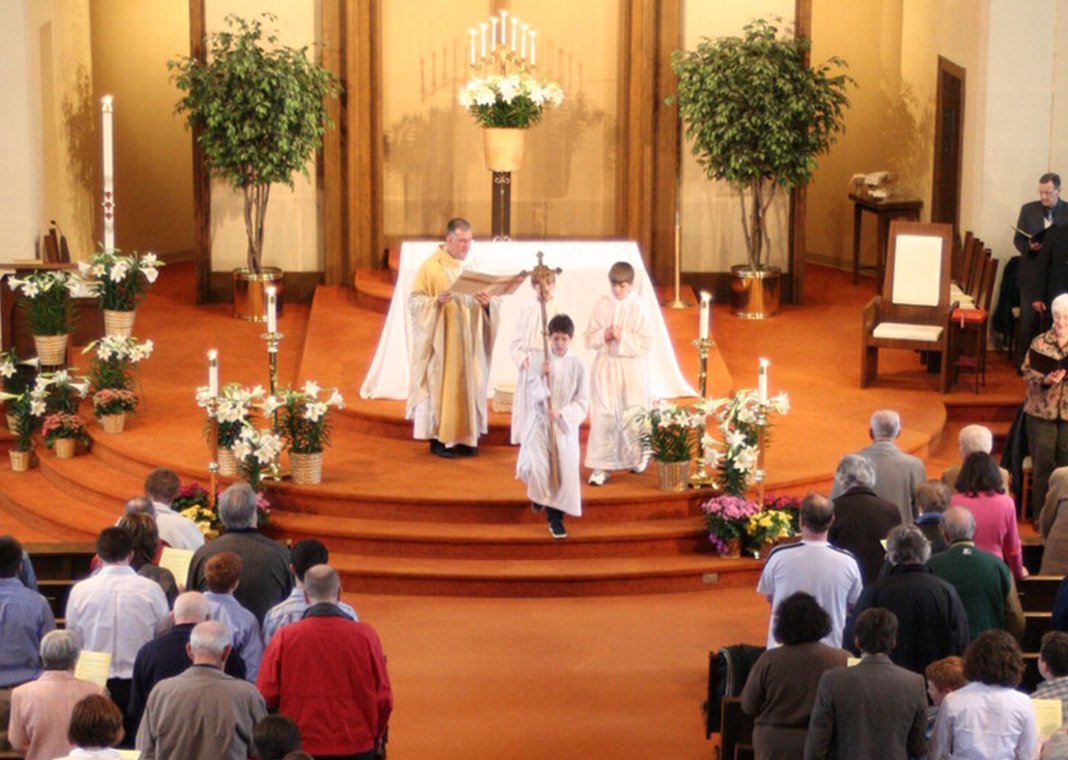
In leading a lesson on the Last Supper and the Eucharist, I used most of my usual plan, inspired by Finding God, Grade 7, Chapter 16. And, as usual, I needed to pause in the discussion of the Last Supper to talk about the Passover. Because my group is preparing for Confirmation, three types of young people gather with me each week: those who haven’t been to religious education classes since First Eucharist and First Reconciliation in second or third grade, those who have been in continuous faith formation but rarely go to Mass and remember little from year to year, and those who have been in continuous faith formation and recall information from regular Mass and class attendance. In sixth grade the young people would have explored the Passover in the context of their Old Testament studies, but often when I mention Passover, they react as if it’s a new concept. No problem; I’m happy to do a quick explanation of Passover so that the young people can understand the feast Jesus was celebrating with his disciples on the night of the Last Supper.
And it is a quick explanation, or at least quick-paced. I speed up my talking pace to tell the story of the Exodus at a quick and animated pace, mentioning the plagues without detail at first. Invariably someone will stop and ask, “What’s a plague?” This year a couple of the young people wondered if I meant the bubonic plague. I encouraged their recognition of the word “plague” but explained that the bubonic plague was not one of the biblical plagues. I named a few of the plagues listed in the book of Exodus: the river turning to blood, frogs, hail, locusts, etc. At the mention of locusts, one boy said, “That’s like a grasshopper, right?” I’m hopeful he remembered this from our discussion of John the Baptist during Advent. When I affirmed his answer, another boy said, “Wait, I thought it was like a cicada.” Not knowing how precise my entomology was, I said that all of those bugs were in the same family and returned to the narrative.
Then I talked about the final plague, the death of the firstborns. I told the young people that the Israelites had been directed to be ready to leave quickly that night and mark their doors with the blood of the lamb so that the Angel of Death would pass over their homes. I always emphasize the words “pass over” by using an arm gesture arcing my arm from right to left so that the young people catch on that this is the reason for the name of the feast Jesus celebrated centuries later. Then I tell the students that before the Israelites left, they ate a special meal, which included flat bread and wine. I quickly finished the story of the Exodus for the young people, through the escape through the Red Sea, and we moved on to discuss the Last Supper.
The time spent talking about the Exodus event was only about 10 minutes in a 90-minute session, but it served a couple of purposes. First, it provided context for the discussion about the Last Supper and the Eucharist by connecting them to Salvation History. Second, it was a fast-paced storytelling break that the young people seemed to enjoy. They were getting good information but in a more relaxed way than reading it or listening to me lecture about it would have allowed. It was also more interactive than watching a video on the Passover might have been. While I don’t claim to have Jesus’ storytelling skills, we have to remember that Jesus was a masterful storyteller (think parables), and just about everyone responds to a good story.
When have you used storytelling skills to bring Bible or saints’ stories alive for young people?





I was intrigued by your comment of the 3 types of students preparing for confirmation. What explanation do the parents have for wanting a sacrament that never come to mass or use any of the previous sacraments?
Paula, I’ve heard different explanations through the years, but my role as a catechist is to teach their children, not act as judge. I am clear with the young people about Mass attendance as an expectation, and I pray that they be inspired to live the fullness of our faith.
Your approach is very interesting. I keep trying ways to better engage my 6th grade students who are just as you describe. Storytelling is very effective and I will try your approach next year.
Mary, do let us know how your storytelling goes! What other ways have you used to engage your sixth graders?
I like to use props – I have some pictures (drawings) of the 10 plagues (locusts, etc.) and I ask for volunteers to “walk them” across the room as we discuss them. Visuals certainly help the class grasp the concept better and I know the child who walked the particular plague across the room will remember, long term, at least ONE of them.
I use like to use dolls with the younger students. I have four dolls I bought from a now defunct company – Joan of Arc, Dominic Savio, Therese of Liseux and Francis of Assisi. I took one home to make a pattern and I’ve also made a Kateria Tekakwitha doll and plan to make more. I use these dolls when I want to tell a story to our preschool students and lower elementary classes. They are great as they are tangible.
I find props make stories more in the present and who doesn’t just LOVE helping by holding up something (all voluntary). Our office (Christian Formation) is frequently tasked with helping our priest with props, toys, etc., that he uses during school Mass as well. 🙂
Lisa, I’m sure the props are very popular! It’s a simple way for little ones to become involved, and the visual aids do make an impression. Thank you for sharing your experience.